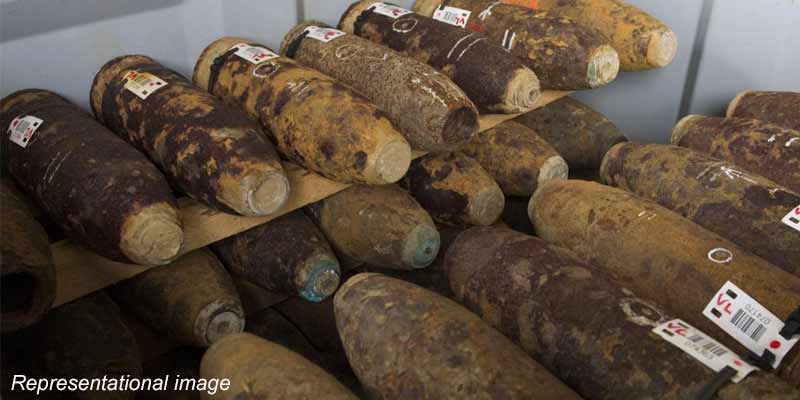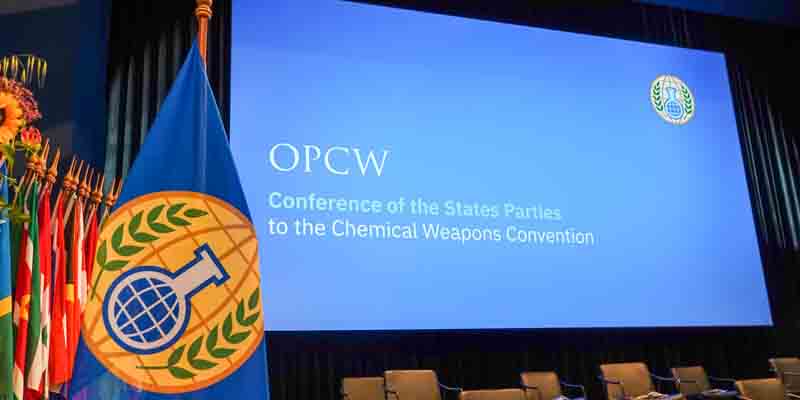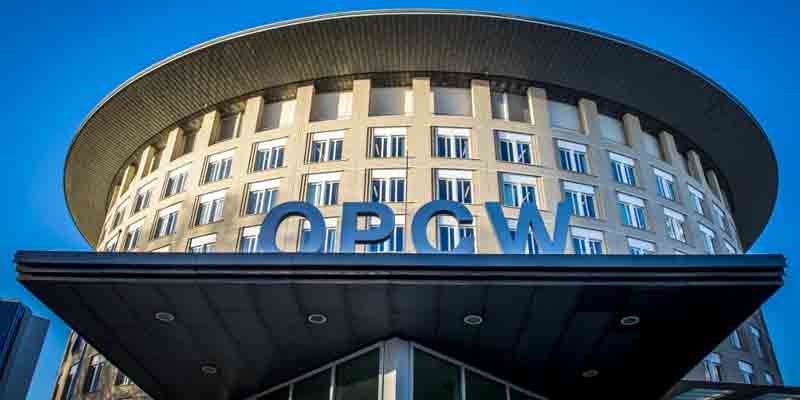- World
- May 07
What is chloropicrin?
• The United States has accused Russia of violating the international chemical weapons ban by deploying the choking agent chloropicrin against Ukrainian troops and using riot control agents as a method of warfare in Ukraine.
• Chloropicrin is listed as a banned choking agent by the Hague-based Organisation for the Prohibition of Chemical Weapons (OPCW), which was created to implement and monitor compliance with the 1993 Chemical Weapons Convention (CWC).
• The CWC bans the production and use of chemical weapons.
What is chloropicrin?
• Chloropicrin is used in agriculture as a soil fumigant. It has also been used as a chemical warfare agent and a riot control agent.
• It was used in large quantities during World War I and was stockpiled during World War II.
• Chloropicrin is an irritant with characteristics of a tear gas. It has an intensely irritating odour.
• It is a chemical belonging to Schedule 3 of the Convention.
• The Secretariat of the Organisation for the Prohibition of Chemical Weapons (OPCW) has been monitoring the situation on the territory of Ukraine since the start of the war in February 2022 in relation to allegations of use of toxic chemicals as weapons.
• Both the Russian Federation and Ukraine have accused one another and reported allegations of use of chemical weapons to the OPCW.
• Under the Chemical Weapons Convention, any toxic chemical, used for its toxic properties with the purpose to cause harm or death is considered a chemical weapon.
• This includes the diversion of dual-use toxic chemicals produced worldwide by the chemical industry from their declared non-prohibited purposes.
• Additionally, under the Convention, States Parties have the obligation to declare all toxic chemical agents they hold for riot control purposes.
• It is against the Convention to use riot control agents at war on the battlefield. If used as a method of warfare, these agents are considered chemical weapons and, hence, are prohibited under the Convention.
• Under Article II, paragraph 7 of the Convention, a Riot Control Agent is defined as any chemical not listed in a Schedule, which can produce rapidly in humans sensory irritation or disabling effects which disappear within a short time following termination of exposure.
What are chemical weapons?
A chemical weapon is a chemical used to cause intentional death or harm through its toxic properties.
• Munitions, devices and other equipment specifically designed to weaponise toxic chemicals also fall under the definition of chemical weapons.
• A common conception of a chemical weapon is of a toxic chemical contained in a delivery system such as a bomb or artillery shell. While technically correct, a definition based on this conception would only cover a small portion of the range of things the Chemical Weapons Convention (CWC) prohibits as ‘chemical weapons’.
• Under the CWC, the definition of a chemical weapon includes all toxic chemicals and their precursors, except when used for purposes permitted by the Convention — in quantities consistent with such a purpose.
• The CWC includes toxic effects on human beings and animals, and not effects on plants.
• In order to qualify as a chemical weapon, the toxic effect of the munitions must not necessarily be lethal. Other forms of harm (incapacitation) are sufficient even if they are only temporary.
• Toxic chemicals can spread over large areas and affect large numbers of people. Chemical weapons are therefore considered as “weapons of mass destruction”.
Chemical Weapons Convention (CWC)
• The use of chemical weapons during World War I generated a great shock in public opinion and soon triggered initiatives to ban these weapons, both their use and later their possession.
• These efforts started with the so-called 1919 Paris Peace Treaties which prohibited the possession of such weapons by the States which had lost the war.
• A prohibition of the use of these weapons, based on the language of the Paris Peace Treaties, was first stipulated in the Treaty for the limitation of Naval Armament adopted by the Conference on the Limitation of Armament held in Washington in 1922 and then in the 1925 Protocol for the Prohibition of the Use in War of Asphyxiating, Poisonous or Other Gases, and of Bacteriological Methods of Warfare (known as “the Geneva Protocol”).
• The Geneva Protocol constituted a major breakthrough as it was widely ratified, although it was slow in finally winning real universal participation.
• After World War II, it was again the use of chemical weapons, namely, the use of tear gas and herbicides by the United States in the Vietnam War, which triggered new attempts to strengthen their ban.
• A ban on possession of such weapons became part of the arms control negotiations conducted under the aegis of the United Nations.
• However, the negotiations on chemical weapons lasted for many years.
• The major stumbling-block being a compliance system which had to be effective on the one hand, but not too intrusive on the other.
• The Convention on the Prohibition of the Development, Production, Stockpiling and Use of Chemical Weapons and on their Destruction (CWC) was adopted in Geneva on September 3, 1992.
• It entered into force in 1997.
• The CWC is a universal, non-discriminatory, multilateral, disarmament treaty which monitors elimination of chemical weapons.
• As many as 193 countries are parties to the Convention.
• Only three countries Egypt, North Korea and South Sudan have not signed the treaty. A fourth, Israel, has signed but not ratified the treaty.
• India signed the treaty in January 1993. India has enacted the Chemical Weapons Convention Act, 2000.
• India was the first State Party to secure the distinction of chemical weapon-free State Party by destructing all its stockpile of its chemical weapons amongst all State Parties of the Convention.
Organisation for the Prohibition of Chemical Weapons (OPCW)
• The Organisation for the Prohibition of Chemical Weapons (OPCW) is the implementing body for the Chemical Weapons Convention.
• The OPCW, with its 193 Member States, oversees the global endeavour to permanently and verifiably eliminate chemical weapons.
• The destruction of all declared chemical weapons stockpiles in the world was achieved in July 2023 under strict verification of the OPCW Secretariat. This does not mean that chemical weapons do not exist anymore.
• The headquarters of OPCW is situated in The Hague, Netherlands.
• For its extensive efforts in eliminating chemical weapons, the OPCW received the 2013 Nobel Peace Prize.
• OPCW has selected India’s Comptroller and Auditor General (CAG) as its external auditor for a three-year term starting in 2021.
Manorama Yearbook app is now available on Google Play Store and iOS App Store




